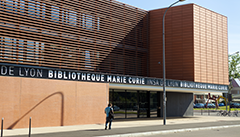
Sciences & Société
Soutenance de thèse : Louis-Marie LEBAS
Development of multiscale liquid phase electron tomography and its application to the study of ultra-sensitive materials
Doctorant : Louis-Marie LEBAS
Laboratoire INSA : MATEIS
École doctorale : ED34 : Matériaux de Lyon
The demand for characterizing a single beam-sensitive sample at the nanoscale is increasing for applications in both materials science and biology.
This study presents a protocol with a software solution that enables precise control over the electron microscope and a custom sample holder, facilitating automated acquisition of fast 3D data from a single object under environmental conditions. This method allows for imaging with a controlled low electron dose and multimodal electron signals. It can be used in environmental scanning or transmission electron microscopes for easy sample preparation and to benefit from high resolution. The software has several key features, including automatic eucentricity adjustment, automatic acquisition with a new drift correction algorithm that eliminates the need for an extra validation step, and focus and astigmatism adjustment assistance.
To demonstrate its effectiveness, the morphology of typical samples such as latex nanoparticles, silica aerogels, and gold nanoparticles is investigated. As an example of a more comprehensive study, a multi-scale test was performed using AlOOH to evaluate its morphological properties at different scales. The Environmental Scanning Electron Microscope (ESEM) was used to monitor the sample in 3D during a dehydration-rehydration cycle and also to evaluate the penetration of gold nanoparticles. The Transmission Electron Microscope (ETEM) provided better resolution and allowed for the quantification of sample porosity down to the nanoscale.
One major achievement of the protocol is that it allows for recording tilt series for electron tomography investigations in STEM mode at multiple scales while using a total electron dose that is an order of magnitude lower than what is accepted in cryo electron tomography. Therefore, this study represents a significant advancement in the analysis of different samples at varying humidity levels. Additionally, it provides a simpler sample preparation process compared to cryo-TEM techniques, while maintaining a similar or even lower radiation dose.
Información adicional
-
Amphithéâtre Émilie du Châtelet (Bibliothèque Marie Curie) - Villeurbanne

